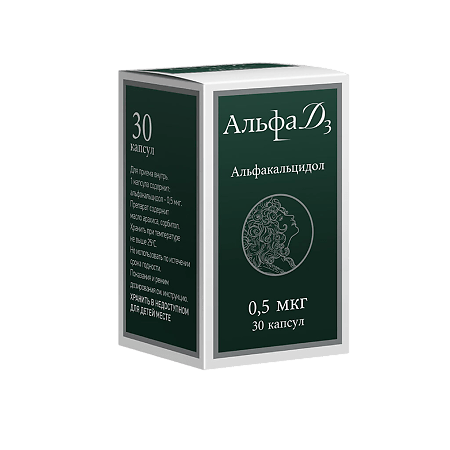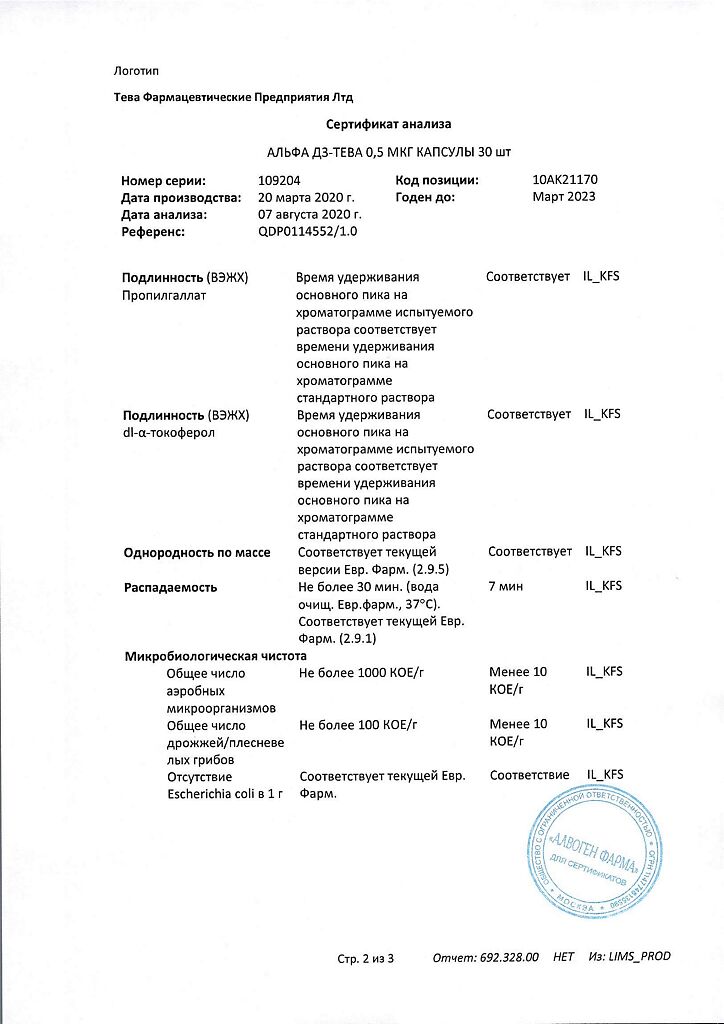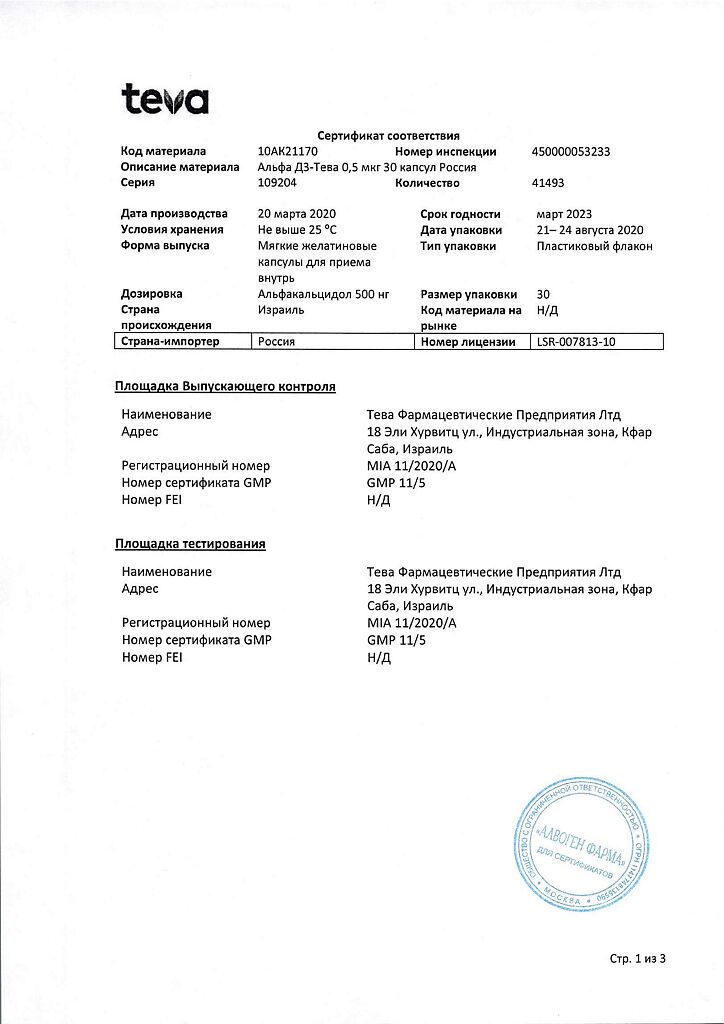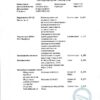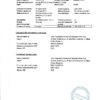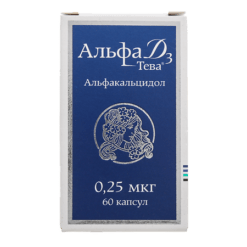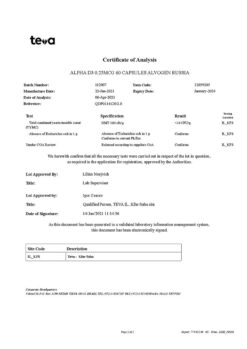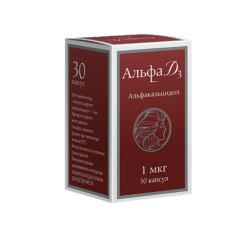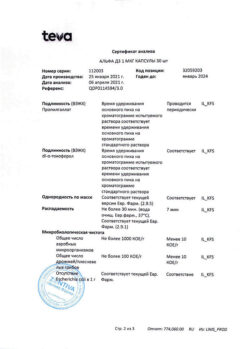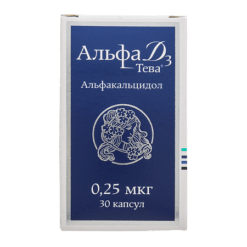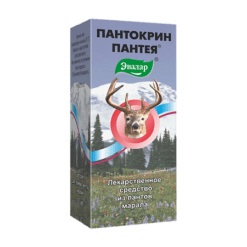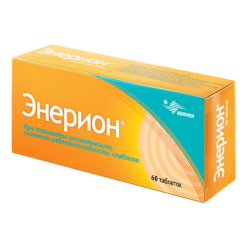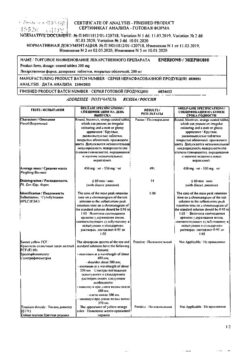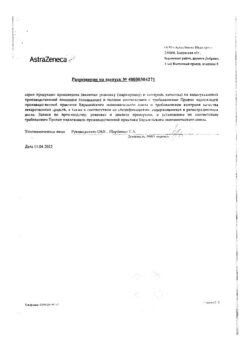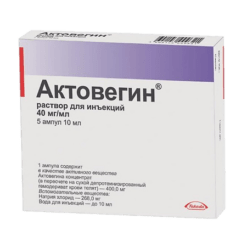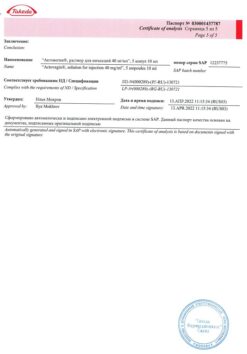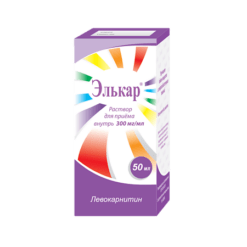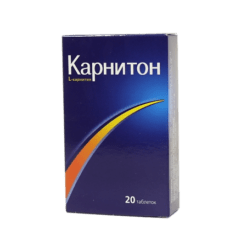No products in the cart.
Alpha D3, 0.5 mcg capsules 30 pcs
€17.47 €14.56
Description
Alpha D3-Teva is a drug that regulates calcium and phosphorus metabolism. It increases the absorption of calcium and phosphorus in the intestine, increases their reabsorption in the kidneys, increases bone mineralization, reduces blood levels of parathyroid hormone.
Alpha D3-Teva restores positive calcium balance in the treatment of calcium malabsorption, thereby reducing the intensity of bone resorption, which helps reduce the incidence of fractures.
With a course of use of the drug a decrease of bone and muscle pain associated with impaired phosphorus-calcium metabolism, improvement of coordination of movements is noted.
Indications
Indications
Osteoporosis, incl. postmenopausal, senile, steroid.
Osteodystrophy in chronic renal failure.
Hypoparathyroidism and pseudohypoparathyroidism.
Rickets and osteomalacia associated with malnutrition or malabsorption.
Hypophosphatemic vitamin D-resistant rickets and osteomalacia.
Pseudodeficiency (vitamin D-dependent) rickets and osteomalacia.
Fanconi syndrome (hereditary renal acidosis with nephrocalcinosis, late rickets and adiposogenital dystrophy).
Renal acidosis.
Pharmacological effect
Pharmacological effect
Alpha D3-Teva is a drug that regulates the metabolism of calcium and phosphorus. Increases the absorption of calcium and phosphorus in the intestines, increases their reabsorption in the kidneys, enhances bone mineralization, and reduces the level of parathyroid hormone in the blood.
Alpha D3-Teva restores a positive calcium balance in the treatment of calcium malabsorption, thereby reducing the intensity of bone resorption, which helps reduce the incidence of fractures.
With a course of use of the drug, there is a decrease in bone and muscle pain associated with impaired phosphorus-calcium metabolism, and improved coordination of movements.
Special instructions
Special instructions
Therapy must be carried out under constant monitoring of the concentration of calcium and phosphate in the blood (at the beginning of treatment – once a week, upon reaching and throughout the entire period of treatment – the concentration of calcium in plasma and urine every 3-5 weeks), as well as the activity of alkaline phosphatase (ALP) (for chronic renal failure – weekly monitoring). In case of chronic renal failure, preliminary correction of hyperphosphatemia is required.
When normalizing the content of alkaline phosphatase in the blood plasma, it is necessary to reduce the dose of the drug Alpha D 3 -Teva, which will avoid the development of hypercalcemia. Hypercalcemia or hypercalciuria can be corrected by discontinuing the drug and reducing calcium intake until the concentration of calcium in the blood plasma is normalized. Typically this period is 1 week. After normalization, therapy is continued, prescribing half the last dose used. It should be borne in mind that sensitivity to vitamin D varies from patient to patient, and in some patients taking even therapeutic doses can cause symptoms of hypervitaminosis.
Children who receive vitamin D for a long time are at increased risk of stunted growth. To prevent hypovitaminosis D, a balanced diet is most preferable.
In old age, the need for vitamin D may increase due to a decrease in the absorption of vitamin D, a decrease in the skin’s ability to synthesize provitamin D3, a decrease in sun exposure, and an increase in the incidence of renal failure.
Active ingredient
Active ingredient
Alfacalcidol
Composition
Composition
Active ingredient:
alfacalcidol – 0.5 mcg.
Excipients:
anhydrous citric acid – 0.015 mg,
propyl gallate – 0.02 mg,
α-tocopherol (vit. E) – 0.02 mg,
ethanol – 1.145 mg,
peanut oil – up to 100 mg.
Composition of soft gelatin capsule:
gelatin – 48.35 mg, glycerol – 11.81 mg, anidrisorb 85/70 – 7.89 mg (sorbitol – 24-40%, sorbitan – 20-30%, mannitol – 0-6%, higher polyols – 12.5-19%, water – 15-17%), red iron oxide dye (E172) – 0.043 mg, titanium dioxide (E171) – 0.65 mg.
Composition of black ink:
shellac – 54%, iron dye black oxide (E172) – 46%
Pregnancy
Pregnancy
During pregnancy (II-III trimester), alfacalcidol is prescribed only if the expected benefit to the mother outweighs the possible risk to the fetus.
Animal experiments have shown that calcitriol in doses 4-15 times higher than recommended doses for humans has a teratogenic effect.
Hypercalcemia in the mother during pregnancy, associated with prolonged overdose of vitamin D, can cause increased sensitivity to vitamin D in the fetus, suppression of parathyroid function, specific elf-like appearance syndrome, mental retardation, and aortic stenosis.
The drug is contraindicated for use during breastfeeding.
Contraindications
Contraindications
Hypersensitivity to alfacalcidol and other components of the drug.
Hypercalcemia.
Hyperphosphatemia (except for hyperphosphatemia in hypoparathyroidism).
Hypermagnesemia.
Hypervitaminosis D.
Pregnancy (1st trimester).
Breastfeeding period.
Children under 3 years of age.
With caution when:
Nephrolithiasis.
Atherosclerosis.
Chronic heart failure.
Chronic renal failure.
Sarcoidosis or other granulomatosis.
Pulmonary tuberculosis (active form).
Pregnancy (II-III trimester).
In patients with an increased risk of developing hypercalcemia, especially in the presence of kidney stones.
Children over 3 years of age.
Side Effects
Side Effects
Anorexia, nausea, vomiting, heartburn, abdominal pain, dry mouth, discomfort in the epigastric region, constipation, diarrhea.
Rarely – a slight increase in liver enzymes.
From the nervous system
General weakness, fatigue, headache, dizziness, drowsiness.
From the cardiovascular system
Tachycardia.
Allergic reactions
Skin rash, itching.
From the musculoskeletal system
Moderate pain in muscles, bones, joints.
Laboratory indicators
Hypercalcemia, slight increase in high-density lipoproteins. In patients with severe renal impairment, hyperphosphatemia may develop.
Interaction
Interaction
In the treatment of osteoporosis, alfacalcidol can be prescribed in combination with estrogens and drugs that reduce bone resorption.
When alfacalcidol is used concomitantly with digitalis preparations, the risk of arrhythmia increases.
Inducers of microsomal liver enzymes (including phenytoin and phenobarbital) reduce, and inhibitors increase, the concentration of alfacalcidol in plasma (a change in its effectiveness is possible).
The absorption of alfacalcidol is reduced when used in combination with mineral oil (for a long time), cholestyramine, colestipol, sucralfate, antacids, and albumin-based drugs.
Taking antacids increases the risk of developing hypermagnesemia and hyperaluminemia.
The toxic effect is weakened by retinol, tocopherol, ascorbic acid, pantothenic acid, thiamine, riboflavin.
Calcitonin, derivatives of etidronic and pamidronic acids, plicamycin, gallium nitrate and glucocorticosteroids reduce the effect.
Alfacalcidol increases the absorption of phosphorus-containing drugs and the risk of hyperphosphatemia.
The simultaneous use of alfacalcidol with calcium preparations and thiazide diuretics can cause hypercalcemia by increasing the absorption of calcium in the intestine and increasing its reabsorption in the kidneys.
During therapy with alfacalcidol, other vitamin D medications and its derivatives should not be prescribed due to possible additive interactions and an increased risk of hypercalcemia.
Overdose
Overdose
Symptoms: early symptoms of hypervitaminosis D (due to hypercalcemia): diarrhea, constipation, nausea, vomiting, dry mouth, anorexia, metallic taste in the mouth, hypercalciuria, polyuria, polydipsia, pollakiuria/nocturia, headache, fatigue, general weakness, myalgia, bone pain.
Late symptoms of hypervitaminosis D: dizziness, confusion, drowsiness, cloudy urine, heart rhythm disturbances, skin itching, increased blood pressure, conjunctival hyperemia, nephrolithiasis, weight loss, photophobia, pancreatitis, gastralgia. Rarely – psychosis (changes in mentality and mood).
Symptoms of chronic vitamin D intoxication: calcification of soft tissues, blood vessels and internal organs (kidneys, lungs), renal and cardiovascular failure up to death, impaired growth in children.
Treatment: the drug should be discontinued. In the early stages of acute overdose – gastric lavage, administration of mineral oil (vaseline), which helps reduce absorption and increase excretion through the intestines.
In severe cases, it may be necessary to carry out supportive treatment measures – hydration with the introduction of infusion saline solutions (forced diuresis), in some cases – the prescription of glucocorticosteroids, loop diuretics, bisphosphonates, calcitonin and hemodialysis using solutions with low calcium content.
It is recommended to monitor blood electrolytes, renal function and cardiac status using electrocardiogram data, especially in patients receiving digoxin.
Storage conditions
Storage conditions
At a temperature not exceeding 25 °C
Shelf life
Shelf life
3 years
Manufacturer
Manufacturer
Catalent Germani Eberbach GmbH, Germany
Additional information
| Shelf life | 3 years |
|---|---|
| Conditions of storage | At a temperature not exceeding 25 °C |
| Manufacturer | Catalent Germani Eberbach GmbH, Germany |
| Medication form | capsules |
| Brand | Catalent Germani Eberbach GmbH |
Other forms…
Related products
Buy Alpha D3, 0.5 mcg capsules 30 pcs with delivery to USA, UK, Europe and over 120 other countries.

